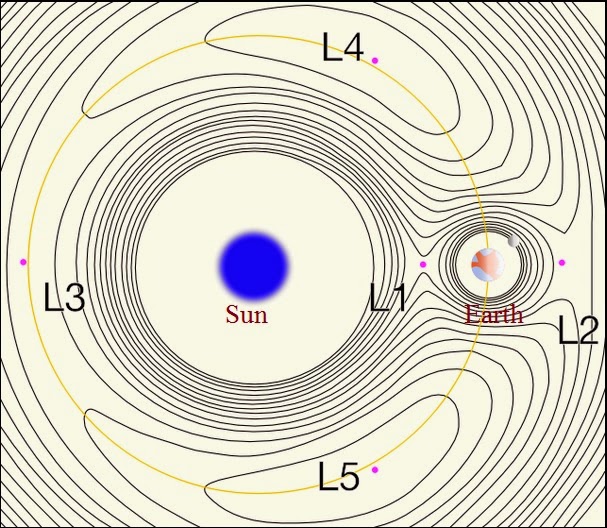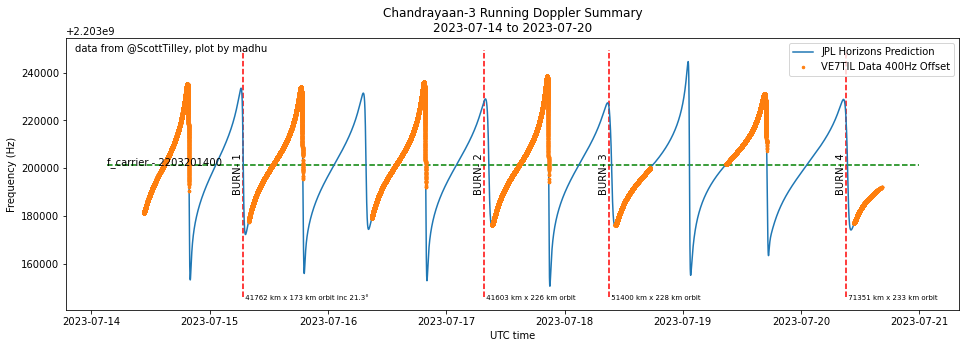Re: Chandrayaan 3: Launch and Discussions
Posted: 17 Jul 2023 22:57
S^3, Glad you are following the program.
Thanks for that insight.
Makes sense.
Thanks for that insight.
Makes sense.
Consortium of Indian Defence Websites
https://forums.bharat-rakshak.com/
sounds like pslv-d1, all over again...SSSalvi wrote: ↑17 Jul 2023 21:05
If I remember correctly the problem explained that time was ( Trying to explain in my language ):
1. Large deviations were not expected
2. So after ( suppose it is a 16 bit processor ) FFFF Hex, the value (say ) was 10000 Hex.
3. Since the processor was not programmed to handle beyond FFFF ( because deviation beyond that was not expected ) the system interpreted it as 0000 ( ignored the carry 1. ) and thought that more power needs to be pumped, and fired the engines more while it was expected to reduce the power.
Logically seems to be correct analysis.
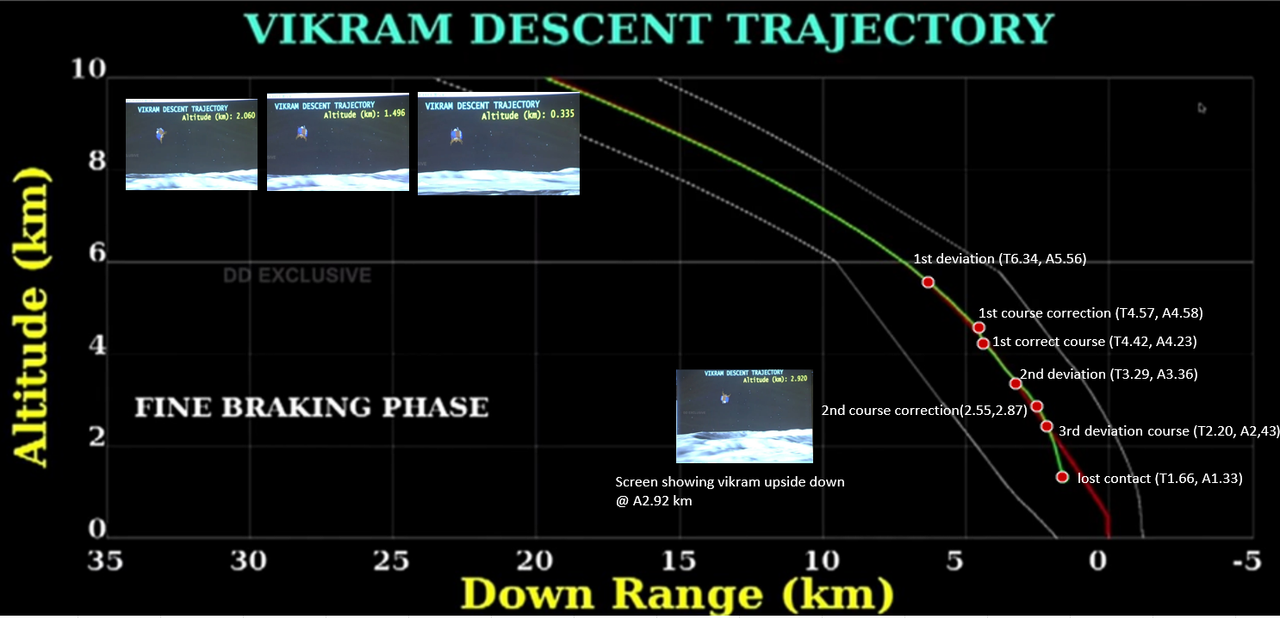
At first blush, sounds like PSLV-D1 but I do not think that is what SSSalvi'ji is saying in his inimitable style.juvva wrote: ↑18 Jul 2023 05:21sounds like pslv-d1, all over again...SSSalvi wrote: ↑17 Jul 2023 21:05
If I remember correctly the problem explained that time was ( Trying to explain in my language ):
1. Large deviations were not expected
2. So after ( suppose it is a 16 bit processor ) FFFF Hex, the value (say ) was 10000 Hex.
3. Since the processor was not programmed to handle beyond FFFF ( because deviation beyond that was not expected ) the system interpreted it as 0000 ( ignored the carry 1. ) and thought that more power needs to be pumped, and fired the engines more while it was expected to reduce the power.
Logically seems to be correct analysis.
Nothing to be concerned off. See my note:madhu wrote: ↑18 Jul 2023 10:36 question for gurus,
Scott Tilley has plotted the residuals for the Doppler data and the JPL Horizons data. the error is consistently reducing for each burn. the question is the increase in perigee from 173 to 221 is to reduce this error? any information on this please.
As the apogee increases, there will be change in the perigee (increase in perigee) and here it went from 173 (175) to 221. What Scott is trying to say is that there is error in tracking because of the changes in perigee (it is like, hey I was looking at 175 and now C3 is at 221 and my plots does not account for it).disha wrote:Now ISRO will raise the apogee to ~143000 km and the perigee may come to ~275 km. Any inclination trimming is carried out at the apogee in that highly elliptical orbit, C3 will be slingshot at perigee burn to 400000 km for the trans-lunar injection.
Comms and deep space network and relay stations are the most boring but most important stuff. I suspected C2 will be used as a relay station (or even a monitoring & observation platform) and thanks for confirming the above.rahulm » 16 Jul 2023 12:07 pm wrote:
A new data point (for me) from this page: Chandrayaan 2 will also be used as a backup relay for comms with Earth.
C2 consisted of an orbiter, lander, and a rover. Of which they lost the last two, leaving an orbiter behind.rahulm » 16 Jul 2023 12:07 pm wrote: A new data point (for me) from this page: Chandrayaan 2 will also be used as a backup relay for comms with Earth.
orbital data is not updated. havens-above is showing that 184km x 41642km x 21.31deg inclination from 221km x 41610km x 21.28deg inclinationarvin wrote: ↑18 Jul 2023 17:53 3rd orbit raising maneovure performed successfully as per ISRO.
https://twitter.com/isro/status/1681236 ... 74850?s=20
Ya, now it's updated
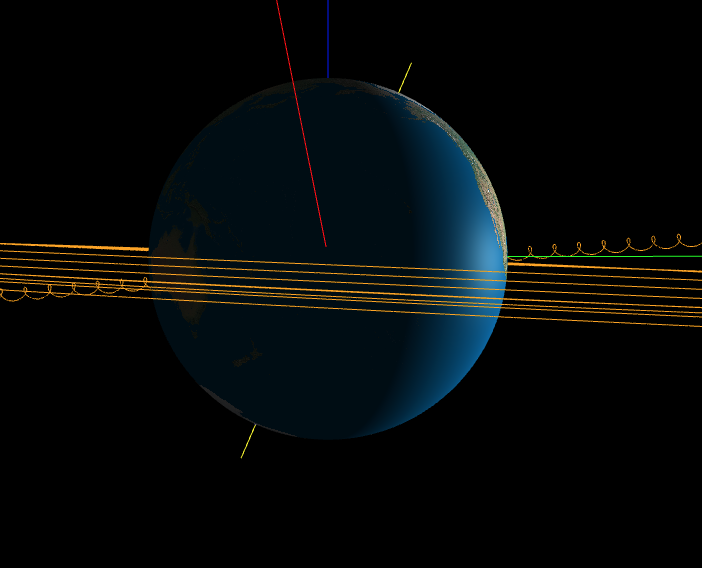
So is the next burn going to be TLI? Or are there one or more orbit-raising burns required first?madhu wrote: ↑18 Jul 2023 18:58 Ya, now it's updated
@isro
Chandrayaan-3 Mission::
The spacecraft has attained a 51400 km x 228 km orbit, as planned.
Oh damn - that's the last thing we need. Don't they usually check the solar weather forecast before launching these missions?vsunder wrote: ↑19 Jul 2023 04:57 The recent immense solar flare activity is a bit worrying. Sensitive electronics can get affected. Satellites have been fried in the past and this one caused serious disruptions in communications.
https://www.livescience.com/space/the-s ... ow-july-18
https://www.scientificamerican.com/arti ... lar-flare/
https://www.reuters.com/science/russian ... 023-07-17/
Flares of this type knocked out Space-X satellites in the past in 2022. The current one is a M class flare so below the worst an X class flare, nevertheless M class flares have done damage in the past to satellites and disrupted telemetry. So second level of intensity, with X being the highest intensity.
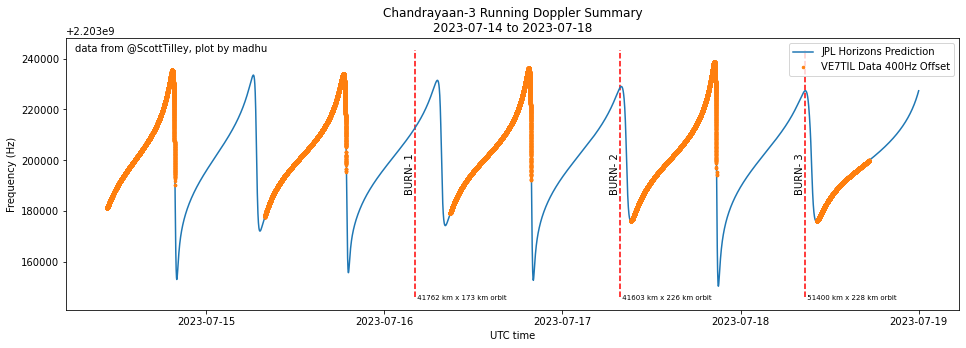
https://twitter.com/TamithaSkov/status/ ... 44192?s=20vsunder wrote: ↑19 Jul 2023 04:57 The recent immense solar flare activity is a bit worrying. Sensitive electronics can get affected. Satellites have been fried in the past and this one caused serious disruptions in communications.
https://www.livescience.com/space/the-s ... ow-july-18
https://www.scientificamerican.com/arti ... lar-flare/
https://www.reuters.com/science/russian ... 023-07-17/
Flares of this type knocked out Space-X satellites in the past in 2022. The current one is a M class flare so below the worst an X class flare, nevertheless M class flares have done damage in the past to satellites and disrupted telemetry. So second level of intensity, with X being the highest intensity.
As I understand, orbit raising burns are always performed at Perigee and Orbit inclination changes are optimal around apogee.madhu wrote: ↑19 Jul 2023 17:05
I am tiring to recreate the doppler summary from ScottTilley data. I see that Burn-2 and 3 matches exactly at the peak and the timing of them is more or less accurate from various sources. I do not have the exact time of Burn-1.
please correct me, my understanding is peaks in the plot corresponds to apogee and perigee right? and firing for orbit-raising maneuver should match the peaks?
any one know exact firing time?
We wait for good news with baited breath. And hope that the craft is at Perigee and <400 Km when the storm arrives and the Earth's magnetosphere can protect it to some degree.
That's a major flare and shows the might of our Sun. One can fit in half-a-dozen of Earth's under the arc of the flare! Thanks for the link to a cool pic!madhu wrote: ↑19 Jul 2023 20:10 https://twitter.com/TamithaSkov/status/ ... 44192?s=20
Twitter handle has posted the picture of flare.
Any update on health?
thanks for the reply SSSalvi. i found some armature radio astronomers quoting the time burn time as '15-07-2023 12:17:00' IST or T06:47 UTC. which makes the line close to peak but not exact peak. error may be due to the use of Doppler and not radar data.SSSalvi wrote: ↑19 Jul 2023 21:03 @Madhu
Also , if you zoom ( with a slider at bottom ) in https://celestrak.org/NORAD/elements/gr ... ATNR=57320 you will see a heavy activity between 1300 and 1500 hrs UT on 14th ... if it helps.
Sorry that I did not do it myself. Attempted , but seems lost, after having no touch with subject for over a decade.
Code: Select all
'15-07-2023 12:17:00', # The first orbit-raising maneuver (Earthbound perigee firing-1)
# source:https://twitter.com/coastal8049/status/1680090422335655936?s=20
#
'17-07-2023 13:14:00', # The second orbit-raising maneuver (Earthbound apogee firing)
# source:https://twitter.com/isro/status/1680845817903722497?s=20 ( from time stamp)
#
'18-07-2023 14:14:00' # The third orbit-raising maneuver (Earthbound perigee firing)
# source:https://twitter.com/amsatdl/status/1681234136814559232?s=20
# but isro tells its at 14-15 hrs https://twitter.com/isro/status/1680845817903722497
#
The standard source : CElestrakwhere did you get the TLE data from? is ISRO publishing it anywhere?
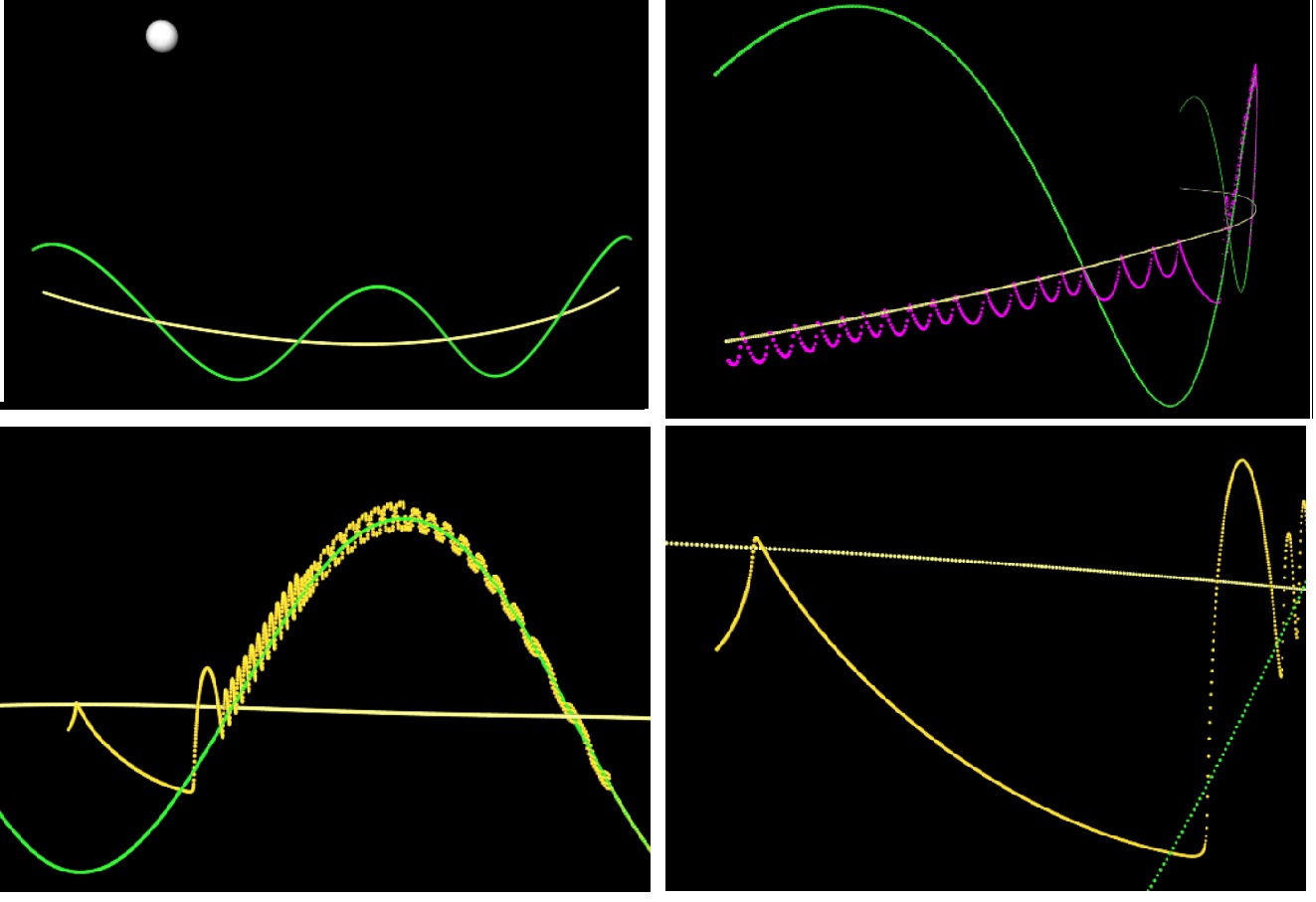
ok thanks!SSSalvi wrote: ↑20 Jul 2023 16:38 No, You have to do some more waiting.
Apogee now about 71000 Kms, Period 1 day.
At the end of 4th such orbit next Orbit raising to about 127000 kms apogee, 3+ days orbit period.
There will be 3 such orbits after which the actual transfer orbit will start.
So another 7 orbits for TLI orbit.
Transfer orbit has a orbital period of about 8.5 days, but before 1/2 of orbit is completed ( just before Apogee of about 362000 kms ), Moon will take away the the CH3.
( Its a plain boundary issue like any nations. Moon will claim that beyond Lagrange1 ( 323050 Kms ) point it is my territory , if I am around , and your ISRO has presented it to me on platter)
thx S^3 ji, adding source will help in long run. i know you are taking it from ISRO tweet but a link will be handy so adding it for your helpSSSalvi wrote: ↑20 Jul 2023 20:56 I wanted to tabulate for my reference. Doing it now.
1st Burn : July 15 06:47 UTC 41762 km x 173
2nd Burn : July 16 41603 km x 226 THis seems to be unplanned so confusion .... To raise Perigee from 173 to 226
3rd burn : July 17 51400 km x 228 km
4th Burn : July 20 71351 km x 233
Code: Select all
orbitRaisingManeuver =[
'15-07-2023 12:17:00', # The first orbit-raising maneuver (Earthbound perigee firing-1)
# source:https://twitter.com/coastal8049/status/1680090422335655936?s=20 (2023-07-15T06:47 UTC)
#
'17-07-2023 13:14:00', # The second orbit-raising maneuver (Earthbound apogee firing)
# source:https://twitter.com/isro/status/1680845817903722497?s=20 ( from time stamp)
#
'18-07-2023 14:30:00' # The third orbit-raising maneuver (Earthbound perigee firing)
# source:https://twitter.com/amsatdl/status/1681234136814559232?s=20 (2023-07-18 08:22:00 ITC)
# but isro tells its at 14-15 hrs https://twitter.com/isro/status/1680845817903722497
#
'20-07-2023 14:30:00' # The fourth orbit-raising maneuver (Earth-bound perigee firing)
# source:https://twitter.com/isro/status/1681960236347965440 (considered middle b/w 2 & 3)
# https://twitter.com/isro/status/1682029955746770944?s=20 (71351 km x 233 km)
]
CY3Orbital = [
' 41762 km x 173 km orbit inc 21.3°', #orbit-raising maneuver - 1; spacecraft is now in 41762 km x 173 km xorbit
' 41603 km x 226 km orbit', #orbit-raising maneuver - 2; spacecraft is now in 41603 km x 226 km orbit
' 51400 km x 228 km orbit', #orbit-raising maneuver - 3; spacecraft is now in 51400 km x 228 km orbit
' 71351 km x 233 km orbit', #orbit-raising maneuver - 4; spacecraft is now in 71351 km x 233 km orbit. ]shows the jumping of frequency as soon as the spacecraft approaches the perigee. I was following it from 12.00pm today till CY3 set at observatory.@amsatdl
#Chandrayaan3 time-lapse at the end of today's observation @SternwarteBO. JPL/Horizons trajectory data was good enough for tracking! Thanks @isro for the update.
Nice plots. Especially the 3rd and 4th plots show the track of CY3 being injected into a lunar equatorial orbit and immediately being steered/forced into a lunar polar orbit. That's quite the 90 degree turn; the thrust generated by its on-board engines. The lander and its electronics must be seeing tremendous stresses from the drastic change in trakectory.
